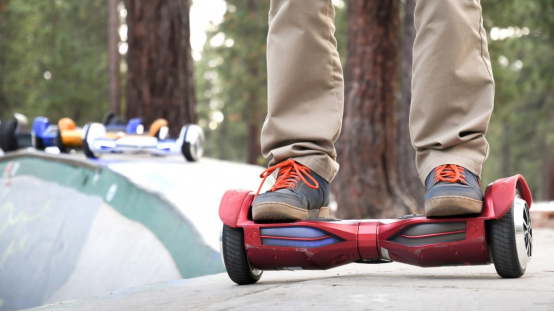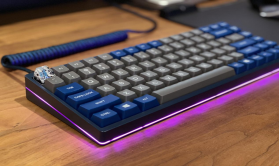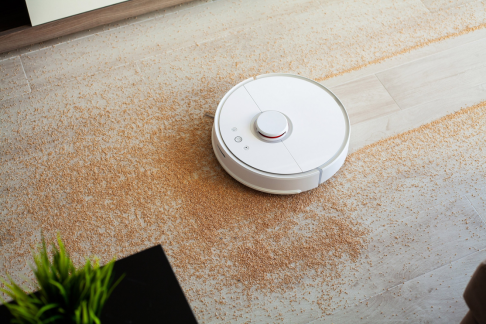How Can You Adjust Your Cadence for Safer Running?
Cadence shapes how safely and smoothly you move as a runner. The way your feet strike the ground, how your body absorbs impact, and how your stride cycles all depend on the rhythm you maintain. Many runners discover cadence while searching for what is cadence running, but the concept becomes meaningful only when you learn how to adjust it in real time. A slight increase or decrease in steps per minute can reduce impact stress, prevent overstriding, and help your body stay aligned during movement. This article explores how cadence adjustments protect your form, how to apply those adjustments gradually, and how a smartwatch like the HUAWEI WATCH GT 6 Pro helps you monitor rhythm naturally without interrupting your run.

Why Adjusting Cadence Improves Running Safety and Stability?
Cadence Helps Prevent Overstriding and Reduces Excess Impact
Overstriding happens when your foot lands too far ahead of your center of mass, creating a braking effect that sends extra force up your legs. Increasing cadence by even a small amount helps you shorten your stride naturally. This adjustment shifts your landing closer beneath your body, reducing unnecessary stress on joints and improving forward momentum. You move more efficiently and safely because the body no longer absorbs heavy impact with each step. Tracking cadence on a smartwatch allows you to notice when your stride becomes too long, especially during long runs or fatigue-heavy moments. The clear outdoor visibility of the HUAWEI WATCH GT 6 Pro display helps you glance down and make quick, helpful adjustments without breaking rhythm.
Consistent Cadence Improves Body Alignment and Balance
Your entire running posture—hips, torso, shoulders, and arms—follows the rhythm of your steps. When cadence becomes inconsistent, your body compensates with extra motion, often leading to lateral sway or excessive rotation. Small inefficiencies increase the risk of strain, especially when the pace rises. A steady cadence aligns your movement so your muscles work together instead of against each other. Smartwatches make this easier because they give you immediate cadence readings alongside other running data. With the HUAWEI WATCH GT 6 Pro, you can monitor speed, heart rate, and grade changes together, helping you understand whether your rhythm stays aligned even when the terrain challenges your stability.
Cadence Reduces Fatigue by Encouraging Efficient Movement Patterns
When you run with a cadence that suits your natural biomechanics, each step demands less effort. You waste less energy on unnecessary vertical bounce or braking force, and your muscles support a smoother forward motion. Fatigue often disrupts cadence, especially during longer distances. When you see cadence dropping on your smartwatch, you can react before your form collapses. This proactive approach keeps you safer because your body maintains proper mechanics even as energy levels fluctuate. The long battery endurance of the HUAWEI WATCH GT 6 Pro supports consistent monitoring across extended runs, helping you track cadence changes closely during training sessions that last several hours.
How Runners Can Adjust Cadence Safely and Gradually?
Increase Cadence in Small Steps to Avoid Tension
Sudden changes in cadence often create stiffness or awkward movement. To adjust cadence safely, runners should increase their step rate by small increments—usually around 3–5 steps per minute at a time. This gradual shift gives your muscles time to adapt to a shorter and quicker stride without straining. The aim is to feel lighter, not rushed. Using a smartwatch helps you guide these micro-adjustments with precision. The HUAWEI WATCH GT 6 Pro makes cadence visible at a glance, so you can track progress during easy runs, tempo sessions, or hill climbs without interrupting your rhythm.
Use Real-Time Feedback to Maintain Control on Various Terrains
Terrain challenges your cadence more than you may realize. Hills can slow your rhythm, while downhills may increase it too quickly. To stay safe, you must adjust your cadence according to the surface beneath you. A smartwatch helps you maintain awareness by showing you cadence next to metrics such as grade, heart rate, and speed. The HUAWEI WATCH GT 6 Pro displays these details clearly, supporting safe adjustments whether you run on steep inclines, long roads, or uneven trails. This data prevents overstriding on climbs and helps you stay balanced on descents, enhancing stability across unpredictable terrain.

Practice Cadence Drills to Build Safer, More Predictable Patterns
Cadence becomes safer and more natural through repeated practice. You can begin by running short intervals where you focus purely on rhythm. Aim to maintain a smooth step pattern, using your smartwatch to confirm that cadence remains stable. Over time, these drills condition your muscles to respond automatically. With consistent tracking, you begin to notice where cadence drops—perhaps during fast finishes or long easy runs. With the HUAWEI WATCH GT 6 Pro logging your sessions regularly, you gain long-term awareness of your movement patterns. This awareness builds confidence and helps you maintain safer stride mechanics across any training plan.
Conclusion
Adjusting cadence is one of the simplest and most effective ways to improve running safety. A slightly higher step rate reduces overstriding, lowers impact forces, and encourages smoother body alignment. When your cadence stays consistent, your movement becomes more predictable and your risk of strain decreases. Smartwatches help you apply these adjustments with clarity and confidence. With real-time cadence readings, long-lasting tracking capabilities, and outdoor-visible displays, devices like the HUAWEI WATCH GT 6 Pro support safe, mindful running without disrupting your natural flow. When you combine cadence awareness with gradual, intentional practice, you build a running style that feels stable, controlled, and protected from unnecessary strain.
Copyright © 2023 guideforests.com. All rights reserved.







